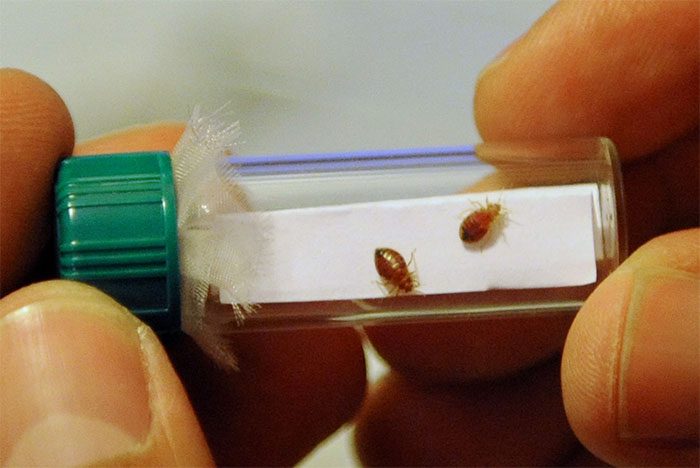South Korea is battling a bed bug outbreak, and the government has launched a campaign against this blood-sucking pest.
From Paris to Seoul, Hong Kong, and even Singapore, people in Europe and Asia are deeply concerned as the bed bug pandemic spreads everywhere.
History of Bed Bugs
According to ancient records, bed bugs were first discovered by humans about 3,550 years ago at a site in Egypt. During the Roman era, bed bugs were quite common in the Mediterranean region, and their global spread was a result of increased trade activities.

Bed bugs were first discovered by humans about 3,550 years ago.
By the early 20th century, bed bugs had become a familiar parasite in daily life.
In fact, during the 1800s, some hotels in London, England, were so infested with bed bugs that guests were advised to “get very drunk to be able to sleep.” At that time, there were instances where entire buildings had to be burned down to stop the bed bugs.
Bed Bug Outbreaks Across Countries
According to a recent scientific study, bed bugs have experienced a “global resurgence” over the past 20 years. In Australia, the rate of bed bug infestations skyrocketed by 4,500% from 1999 to 2006. By 2010, many major cities, notably New York in the United States, faced large-scale bed bug infestations.
However, 2023 has witnessed an unusual explosion of the bed bug pandemic, starting with shocking video clips of bed bugs “crawling around” on subways in Paris that startled the world.
Subsequently, in South Korea, bed bugs were first discovered in a sauna in Seoul, followed by infestations in university dormitories. In Hong Kong, reports of bed bugs on transportation at the airport sparked outrage among residents and tourists, raising concerns about safety in travel activities.
Reasons for the Surge in Bed Bugs
One major reason for the significant increase in bed bugs is that they have developed resistance to any chemicals used to treat them, such as DDT.

Bed bug. (Source: Terminix).
Dini Miller, a Professor of Entomology and Urban Pest Management Specialist at Virginia Tech (USA), stated in Times magazine: “The bugs we encounter today are not like those of our grandparents. They have thick, hard shells that are difficult to penetrate with chemicals.” She also believes that exposure to various chemicals has led them to develop thicker and harder exoskeletons, making it hard for chemicals to enter their bodies.
Nina Jenkins, an Associate Professor of Entomology at Pennsylvania State University, explains why chemicals cannot penetrate bed bugs’ bodies. “Bed bugs move using hooked claws, which help their bodies lift high off the ground. Thus, the area of their bodies that comes into contact with surfaces is very small. Therefore, when they pass over treated surfaces, they only absorb a tiny amount of insecticide, which is insufficient to kill them.”
Even when exposed to chemicals, they have developed enzymes that can neutralize toxins in their bodies.

A bed bug in New York, USA. (Photo: AFP/TTXVN).
Two other important factors contributing to the spread of bed bugs are population density and travel. Bed bugs spread rapidly in densely populated areas.
Both Paris and Seoul have high population densities (20,641 and 15,600 people/km², respectively), which partly explains why these are two regions currently experiencing bed bug outbreaks. Furthermore, increased travel allows bed bugs to spread more widely.
Do Bed Bugs Really Cause Health Problems?
In reality, the health risks posed by bed bugs are minimal, primarily consisting of itchy bites and minor risks of allergic reactions and secondary infections.
However, they do have psychological impacts. Clive Boase, a pest control expert in the USA, stated in The Economist: “Mosquitoes, leeches, and other parasites are quite annoying. But if a traveler brings bed bugs home after a vacation, they tend to spread quickly and are difficult to deal with. This makes people feel embarrassed, coupled with the anxiety of being stigmatized by the community.”
On the other hand, in reality, bed bugs have always existed, just in varying numbers. Sometimes, the media can lead the public to overreact about bed bugs even if they may not have encountered a single bug directly.





















































